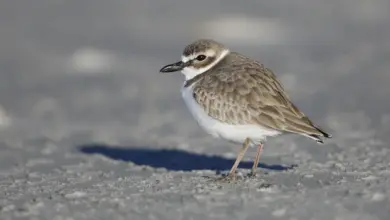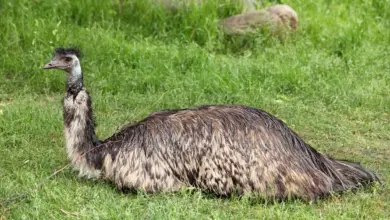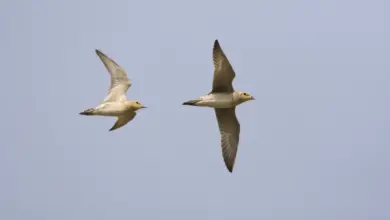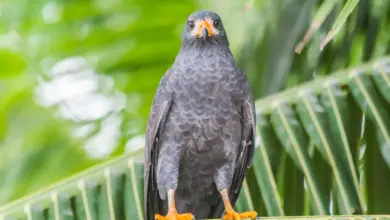Northern Royal Albatross
Northern Royal Albatross (Diomedea sanfordi)
The Northern Royal Albatrosses or Toroa, Diomedea sanfordi, is a large seabird from the albatross family.
It was split from the closely related Southern Royal Albatross as recently as 1998, though not all scientists support that conclusion and consider both of them to be subspecies of the Royal Albatross.
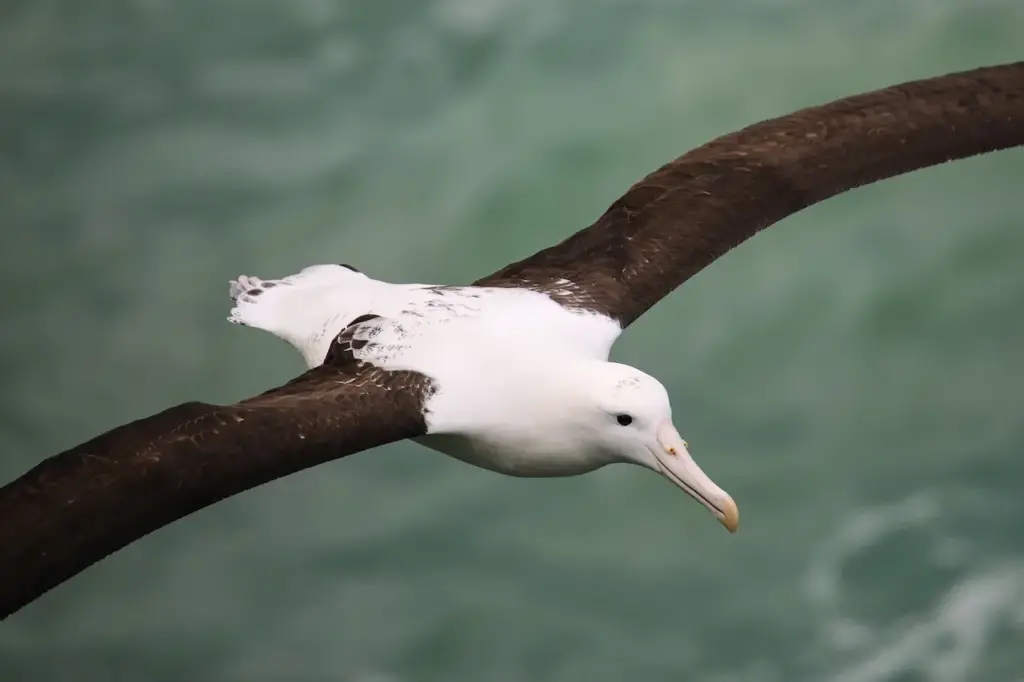
Description
The Northern Royal Albatross is typically about 115 cm (45 in), weighs 6.2–8.2 kg (14–18 lb), and has a wingspan of 270–305 cm (110–120 in). The juvenile has a white head, neck, upper mantle, rump, and underparts. There is dark speckling on the crown and rump. Its lower mantle and back are white with more black speckling than the crown, and it has dark black-brown upper wings with white flecks on its cover. Its tail is white with a black-brown tip, as are its underwings. There is a black band behind the leading edge of its wings between the carpal joint and the tip. As they age, their head, back, rump, tail, and scapular region whiten. All ages have a pink bill with a black cutting edge on the upper mandible (bill), along with flesh-colored legs. The Northern Royal Albatross can be distinguished from the Southern at sea by its upper wings, the plumage of which are all dark compared to the large areas of white on the Southern. The two species also differ in behavior.
Feeding
The Northern Royal Albatross feeds on fish, cephalopods, crustaceans, salps, and carrion. Squid is an important part of their diet and can make up 85% of it.
Reproduction
They will perform a very extensive mutual or group display, sometimes in the air or on the water. Once they form a bond, the displays lose extravagance. Breeding starts at 8 years. They nest biennially (every second year), and will build their nests on flat summits of the islands that they frequent. They prefer to be in grass or herbs, and their nest is a low mound of vegetation, mud, and feathers. A single egg is laid, in October or November, in a nest which takes both parents around 80 days to incubate. The chick is brooded for a month and is ready to fledge after around 240 days. Their colonies are denser than those of any other great albatross.
Range
Northern Royal Albatrosses nest on the Chatham Islands (Forty-fours Island, Big Sister Island, and Little Sister Island), Enderby Island in the Auckland Islands, and at Taiaroa Head on the Otago Peninsula, New Zealand. When they are not breeding they undertake circumpolar flights in the southern oceans, in particular the Humboldt Current and the Patagonian Shelf.
| Location | Population | Date | Trend |
| Chatham Islands | 6,500-7,000 pair | 1998 | Declining |
| Taiaroa Head, South Island | 25 pair | 1998 | Declining |
| Total | 17,000 | 1998 | Declining |
Conservation
Northern Royal Albatrosses are listed as an endangered species by the IUCN, and they have an occurrence range of 64,300,000 km2 (24,800,000 sq mi), with a breeding range of 8 km2 (3.1 sq mi). 5,200 to 5,800 pairs breed on the Chatham Islands annually along with 25 pairs at Taiaroa Head and 2 pairs at Enderby Island, for an estimated total of 17,000 birds, although this is a 1991 estimate. Their main breeding grounds on the Chatham Islands have been badly damaged by a series of intense storms and the resulting lack of nesting material has lowered their breeding success. Chicks and eggs of birds breeding on the South Island have also been preyed upon by introduced species, such as Felis catus, Lucilia sericata, and Mustela erminea. Finally, longline fishing is the biggest threat to this bird, even though it has been reduced.
To help in the survival of this species, bird banding is underway, Taiaroa Head has predator control in effect during the breeding season, as well as the Chatham Islands have no predators. Enderby Island and Taiaroa Head are nature preserves, and the Department of Conservation (New Zealand) eradicated feral cattle, rabbits, and mice from Enderby Island by 1993.
Thanks to the efforts of L. E. Richdale, the colony on Taiaroa Head was protected by 1950. 1972 saw the first formal public viewing of their breeding area, and by 2001 more than 100,000 people visited annually to watch this species.
Etymology
Diomedea antipodensis breaks into Diomedea referring to Diomedes (hero in Greek mythology), whose companions turned to birds.
Taxonomy
Albatrosses belong to the Diomedeidae family and come from the Procellariiformes order, along with Shearwaters, Fulmars, storm petrels, and Diving-petrels. They share certain identifying features. First, they have nasal passages that attach to the upper bill called naricorns. Although the nostrils on the Albatross are on the sides of the bill. The bills of Procellariiformes are also unique in that they are split into between 7 and 9 horny plates. Finally, they produce a stomach oil made up of wax esters and triglycerides that are stored in the proventriculus (stomach). This is used against predators as well as an energy-rich food source for chicks and for adults during their long flights.
The Northern Royal Albatross was first described as Diomedea sanfordi by Robert Cushman Murphy, in 1917, based on a specimen from the Chatham Islands.

